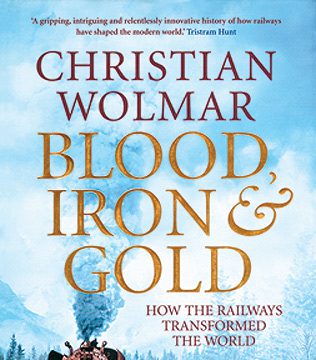In this age of the car and the aeroplane, the contribution of the railways to the changes in our lives over the last two centuries is all too often forgotten, and the contribution they can make to the future ignored. Christian Wolmar — a renowned writer on transport issues and a passionate railwayman — sets the record of its contributions straight, and makes it clear that where governments invest in them, the railways have a great future.
Wolmar argues that railways laid the foundation for all the changes in society brought about by the industrial revolution. Cars only intensified those changes. In 1853, India’s first railway, the line between Bombay and Thana, was opened and the Illustrated Weekly of London appreciated how momentous the occasion was. Wolmar quotes the magazine as saying that the recent battles the British had fought to bring India into the Empire “seem tame and commonplace” in comparison to the coming of the railways. The railways did indeed enable Britain to tighten its hold over India. Ironically, they also enabled the leaders of the independence movement to spread their democratic message.
Wolmar argues convincingly that the railways played an important role in stimulating the conditions for the spread of democracy elsewhere. That is why autocratic rulers, such as the Austrian Emperor Francis II, opposed their development. Of course, they also gave autocrats the means to move troops rapidly when revolts broke out. Some argue that the railways broke down barriers between classes, but others maintain these were heightened by the railways’ own class system. In India, railways challenged the unofficial colour bar. Wolmar tells the story of a white planter who protested against the presence of an Indian lawyer in his compartment by throwing the lawyer’s sandals out of the window while he was asleep. The lawyer retaliated by throwing the planter’s jacket away while he was asleep. When the planter awoke and asked about his jacket, the lawyer said, “Your coat has gone to fetch my slippers.” It is sobering to be reminded that, until the 1960s, there was separate, inferior accommodation for black people on American railways.
But although railways didn’t necessarily unite people, they did unite countries. Wolmar describes the role it played in uniting Canada and Italy, and quotes a writer who suggested that America became a nation when the lines from the East and West coasts met.
Indian railways don’t come out too well here. Wolmar says that conditions in the third class caused complaints throughout the period of British rule and nothing was done about them until the Raj ended. Nowhere in the world was the contrast between first and third class so great as in India. On the conditions for workers who built the Indian railways, Wolmar quotes one historian’s estimate that 25,000 people lost their lives building the railway up the Western Ghats. Many of those died of diseases such as cholera.
From India’s point of view, the most important part of this book is the last chapter, where Wolmar argues that a new era of train travel has begun. He points out that the high-speed trains operating in many countries, including India’s neighbour China, are proving more efficient than aeroplanes over considerable distances. But rail cannot compete with road or air transport unless it’s faster than any Indian train.
Stressing the importance of government investment in railways, Wolmar says, “Predictably, it is the two bastions of privately built railways, the United States and the UK, where the state has least involvement, that have missed out on the high speed revolution.” But that should not be taken as offering comfort to the mandarins of Rail Bhavan. Government support doesn’t mean shackling the railways to an old-fashioned, outdated, bureaucratic system of management at the mercy of politicians’ whims and fancies. If India is to speed up its trains and make the best use of its magnificent railways, it needs to give the management freedom. The railways should be converted from a department of the government into an independent autonomous public corporation. Then in India too there will be the “railway renaissance” Wolmar describes.




